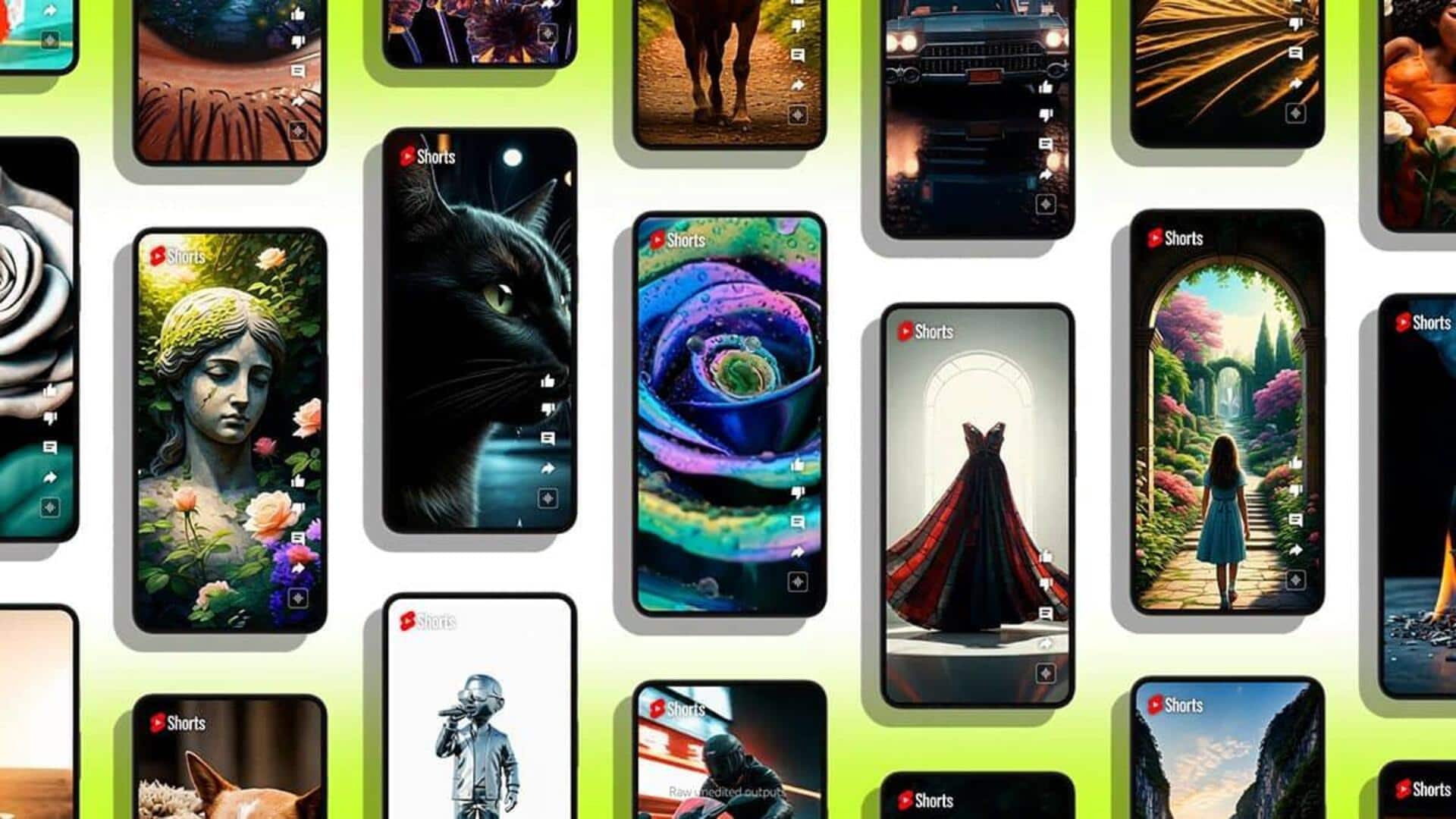
YouTube Shorts now lets you create AI videos using prompts
What's the story
YouTube is integrating Google DeepMind's newest video model, Veo 2, into its Shorts platform.
The move will allow creators to generate artificial intelligence (AI) video clips for their posts using text prompts.
Veo 2 is Google's response to Sora, the text-to-video generator from OpenAI.
The upcoming feature is expected to improve user experience and inspire creativity among content creators on the platform.
Feature upgrade
Veo 2 to enhance AI video generation on YouTube Shorts
Before the integration with Veo 2, YouTube Shorts had already introduced a feature called Dream Screen. The tool enabled creators to generate AI backgrounds for their Shorts using a text prompt.
However, the incorporation of Veo 2 will take this a step further by allowing creators to produce standalone video clips that can be added to any of their Shorts.
Performance boost
Veo 2 promises faster and more realistic AI tools
As per Dina Berrada, YouTube's Director of Product, the new AI tools offered by Veo 2 will be faster than ever.
"Veo 2 understands real-world physics and human movement better, making its output more detailed and realistic," Berrada said in a blog post.
She also emphasized that creators can define a style, lens or cinematic effect with Dream Screen for better creative expression.
Content identification
YouTube to watermark AI-generated videos using SynthID
To maintain transparency, YouTube will leverage DeepMind's SynthID tool to watermark and identify AI-generated content.
This move is aimed at clearly marking that these videos were created using AI.
However, it's worth noting that while these labels offer some level of transparency, they don't completely mitigate the potential risks of sharing synthetic content that could potentially mislead viewers.
Feature rollout
Veo 2 feature now available for YouTube Shorts creators
To use Veo 2 on YouTube Shorts, creators will have to open the Shorts camera, select Green Screen, and then head over to Dream Screen.
From here, they can enter a text prompt to generate a video.
The feature is being launched today for creators in the US, Canada, Australia, and New Zealand. YouTube plans to expand access at a later date.